For the 50th anniversary of the Fronton appellation, we have decided to take a closer look at this discreet yet high-potential vineyard. Enjoy the discovery.
History
The presence of vines in Fronton dates back to Roman times, but it was in the 12th century that the Order of the Knights Hospitaller of Saint John of Jerusalem (later the Order of Malta) founded the town and developed its vineyards. According to legend, the emblematic Négrette grape was brought back from Cyprus by the Hospitallers upon their return from the Crusades. However, science has since set the record straight: this story is but a legend. Négrette is in fact of local origin, native to the banks of the Tarn. DNA analyses have revealed kinship with Malbec and Prunelard, all members of the cotoïde family.
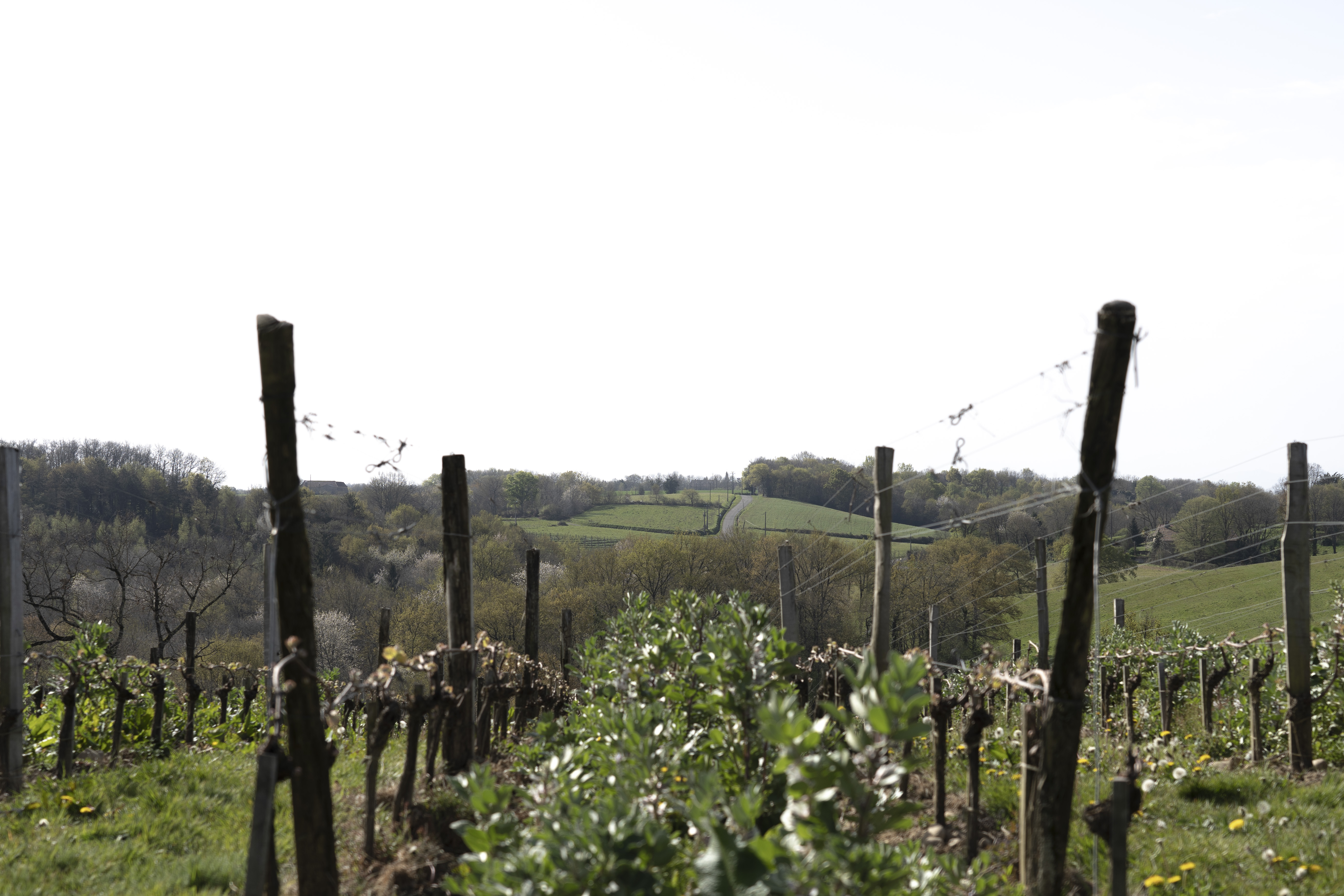
The Négrette
Négrette is the signature grape variety of Fronton. Once widespread throughout the Tarn valley, from Gaillac to Montauban, today it is found almost exclusively in Fronton. It must be the dominant grape in both red and rosé blends of the appellation. Its clusters are generally small, compact, and winged, with moderately sized berries that possess a deep blue-black skin and juicy flesh. Négrette is particularly rich in anthocyanins—antioxidant pigments found in the skin. This capricious variety is sensitive to rot and does not tolerate high yields, thus requiring constant attention and meticulous care. Aromatically, Négrette ranges from red to black fruits (blackberry, blackcurrant) with peppery notes, depending on the vintage. The finish often reveals licorice. The violet aroma, so characteristic in the youth of these wines, comes from a molecule called beta-ionone, which is found at especially high concentrations in Fronton wines.
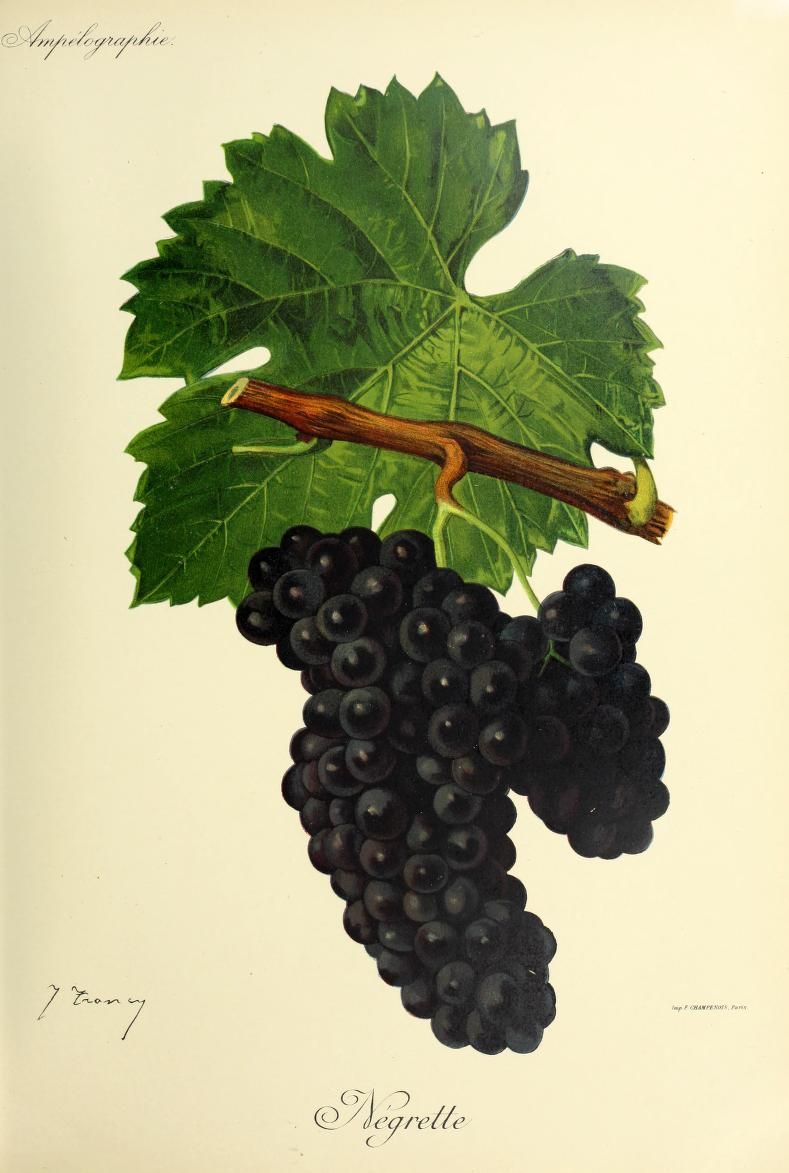
The appellation
Fronton achieved AOC status in 1975, after previously being divided into two VDQS (Vin Délimité de Qualité Supérieure): Fronton and Villaudric. The AOC mandates a majority of Négrette in the vineyard, as well as compulsory blending. Historically, Cabernets were widely used alongside Négrette, but the now-common Négrette-Syrah association is in fact quite recent. It was only in the 2010s that 100% Négrette cuvées were authorized for commercial release, and these now serve as flagships for the appellation. Currently, eight varieties may complement Négrette: Syrah, Gamay, Côt (Malbec), Cabernet Sauvignon, Cabernet Franc, and Fer Servadou (Braucol).
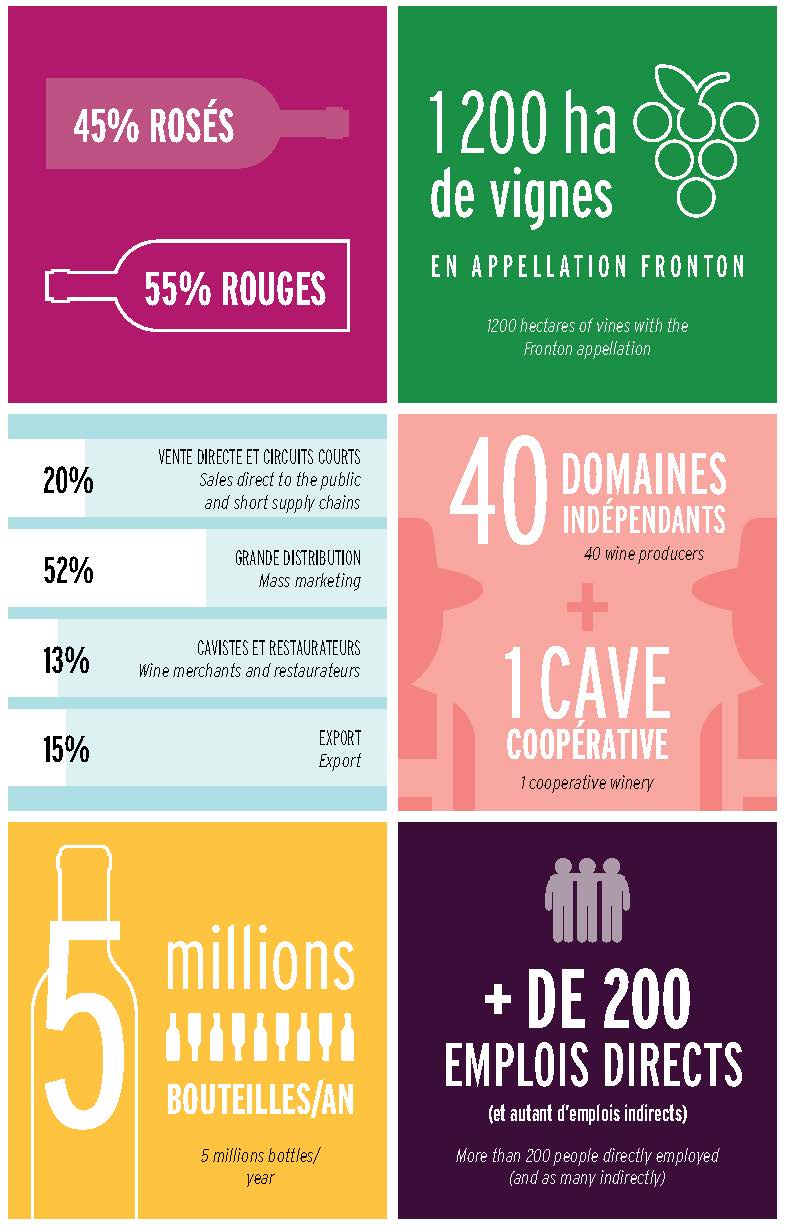
From fruity wines to age-worthy bottlings
Négrette is perfectly suited to producing wines meant to be enjoyed young and fresh. However, certain cuvées, crafted from parcel selections and matured for several months (in barrels or other vessels), are designed for cellaring. This is especially true for the cuvées of the Collectif Négrette or for iconic bottlings from renowned estates such as Domaine Le Roc (Ribes family) or Domaine Plaisance Penavayre (Marc and Thibaut Penavayre). The Collectif Négrette unites a dozen winegrowers from the appellation, all committed to ambitious research and progress in crafting top-tier red wines. After many meetings, they adopted a set of specifications that matches their ambitions and showcases the full potential of the region’s flagship grape.
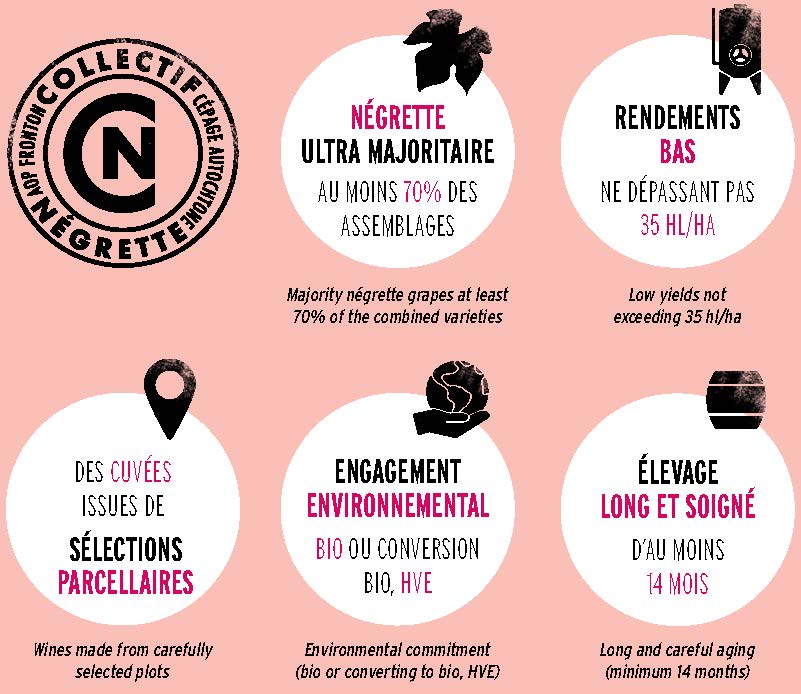
Bouysselet: Fronton's white weapon
Among the white grape varieties grown in Fronton, only Bouysselet blanc can claim truly local origins. Rediscovered about a dozen years ago by Diane and Philippe Cauvin of Domaine de la Colombière, it had nearly vanished, save for a few vines preserved by the Brousse family in Villaudric. Genetic studies in Montpellier have shown it to be a cross between Savagnin and Plant de Cauzette. Officially registered in France’s grape variety catalogue since 2016 (List A), Bouysselet now covers about ten hectares, with five estates producing varietal wines. Bouysselet is a relatively “rustic” grape, not very sensitive to downy mildew or grey rot. Its medium-sized berries have a simple flavor and thick, pruinose skins. Phenologically, it buds nine days after Chasselas and ripens three weeks later. Related to Jura’s Savagnin, Bouysselet yields white wines with excellent acidity, even at full ripeness. When optimally ripe, the wines develop aromas of pear, apple, mirabelle plum, linden, and flint, often dominated by contemporary notes of citrus and bitterness. The finish is fresh, vibrant, and persistent, offering fine gastronomic potential, from sauced poultry to mature cheeses and, naturally, fish.

Bouysselet du domaine La Colombière (domainelacolombiere.com)
The terroir of Fronton
The Fronton vineyard lies between the Garonne and Tarn rivers, but the appellation itself stretches across three ancient terraces on the Tarn’s left bank. The oldest and highest terrace (around 200 meters altitude) is the farthest and most gravelly. In contrast, the lower terrace, closer to the Tarn, is rich in sandy boulbènes—a mix of pebbles, gravel, sand, and silt. Fronton’s winegrowers are currently conducting a major scientific study to better define these terroirs, identifying around twenty distinct units to adapt their practices to the soils and evolving climate. The climate is not strictly Mediterranean: it benefits from both oceanic and Mediterranean influences, with significant sunshine (over 2,000 hours per year) and low, irregular rainfall. The Autan wind, especially in autumn, helps keep the vineyards healthy and promotes optimal grape ripening.
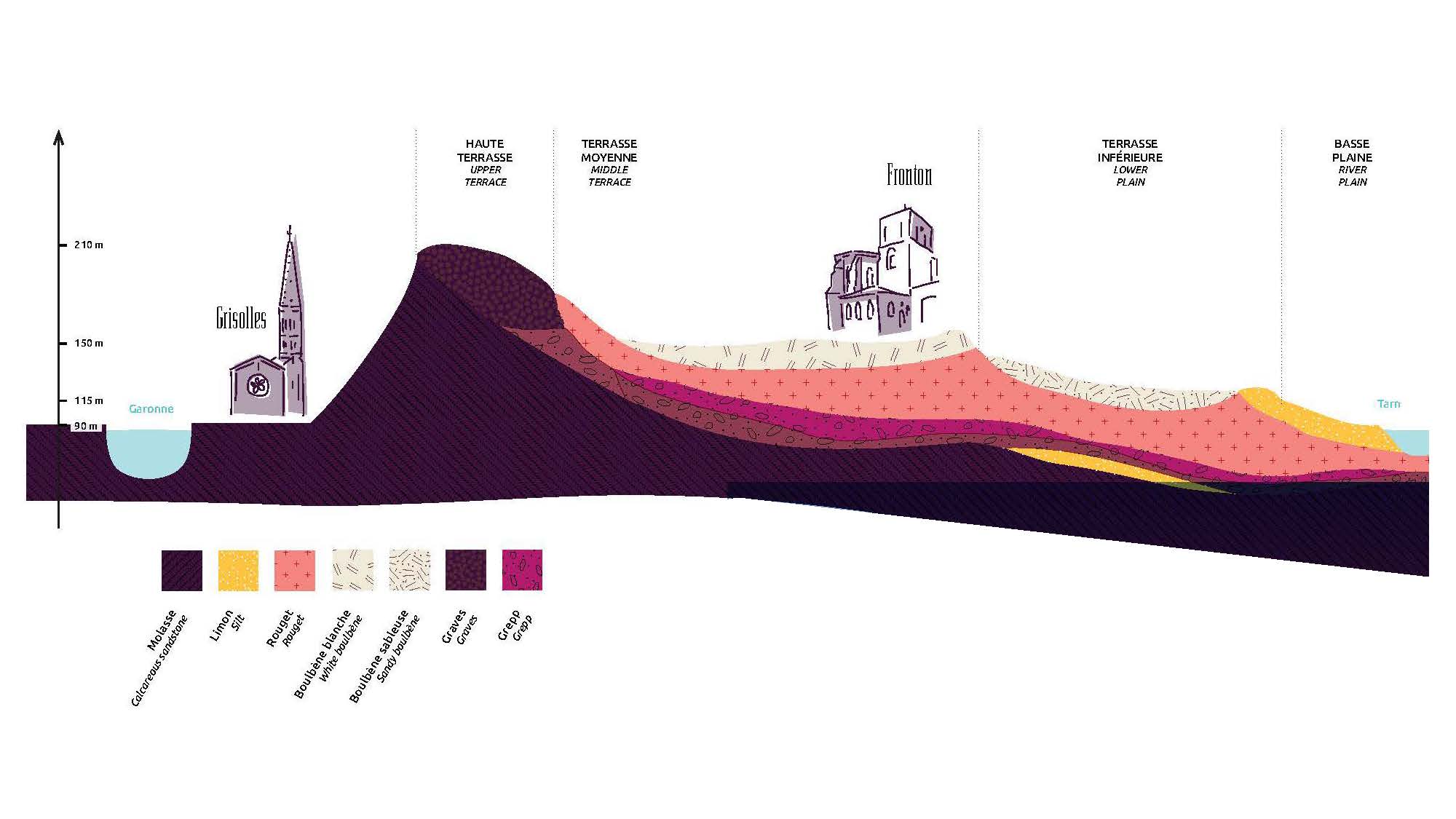
A dynamic, attractive appellation
About six years ago, Maxime Touzet took over Château La Loge, while neighbor Marie Couderc revived Château des Peyraux. Since then, other newcomers have joined, bringing new energy to Fronton. Morgane Jouan and Nicolas Baudet have reinvigorated Château Terre Fauve, Antoine Rouiller has created Domaine de La Valette, and Nicholas Smith, a former drummer turned winemaker, brings a British touch to Négrette at his estate Bois de Devès. The revival of Domaine de Belaygues is also noteworthy. Today, nearly 40% of the estates are organic or in conversion, making Fronton the most committed vineyard in southwest France in terms of ecological transition.
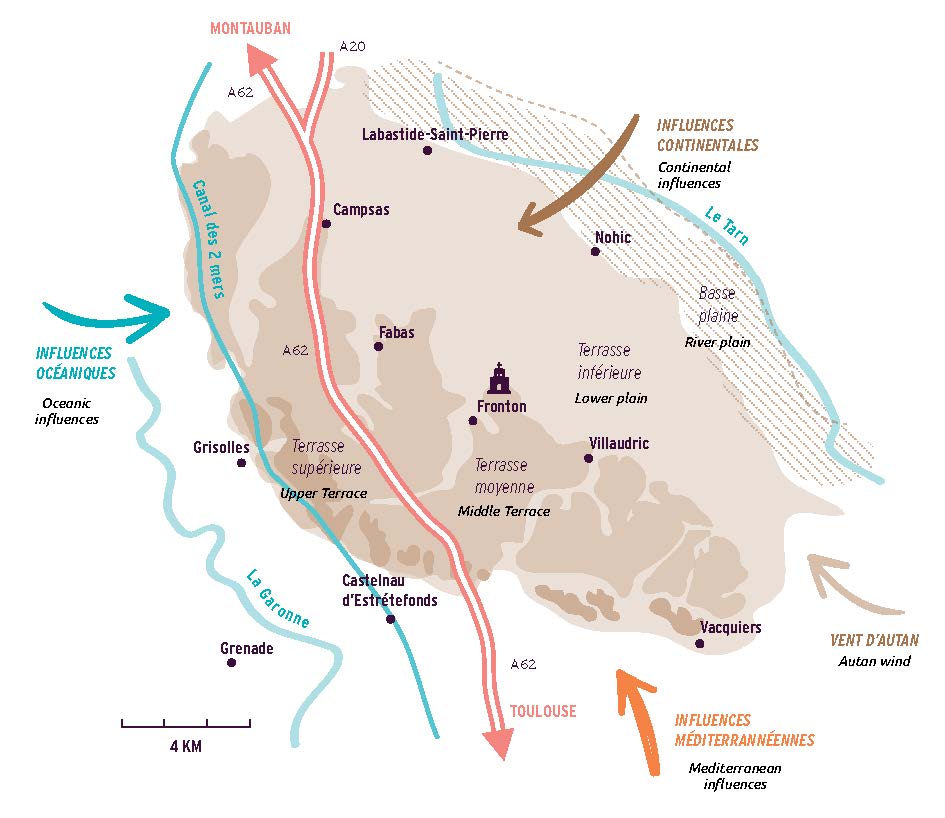
In summary
Strengths
Négrette: Its distinctive signature, regardless of wine style, makes it a compelling reason to discover Fronton wines and a reassuring marker for learning about the region.
A protean grape: Rosé, sparkling, fruity red, age-worthy red, fortified wine—the versatility of Négrette is a major asset in today’s fast-changing consumption landscape.
A small vineyard: The appellation’s modest size is inversely proportional to its adaptability—a key advantage amid rapid change.
A generational patchwork of passion: The vineyard attracts new generations of enthusiasts, still driven by the commitment of its historic founders—a rarity in France, where succession is often more tradition than passion.
An underrated vineyard: This means attractive prices and contagious enthusiasm!
Bouysselet: What a grape! The future gem of Fronton? This white variety arrives at just the right time for the region and the market.
Weaknesses
Négrette: Still little-known—a challenge for building its reputation, partly due to the small size of its main vineyard.
Climate Change: What future for Fronton? Bouysselet offers a promising hypothesis, but the vineyard’s full potential remains untapped.
Recognition of a Fronton White: Bouysselet is not yet accepted in the AOC Fronton (which currently only produces red wine)—a weakness for image and investment, partly due to administrative inertia.
Vineyard Size: Remaining too small may threaten its survival, but in the digital age, media presence can compensate. Still, the market needs wine—1,200 hectares today is not enough to convert the world to Négrette. Fortunately, there is room to plant more.
Tasting
Many good wines, a few excellent bottles, in all three colors, and often at very attractive prices: Fronton wines have plenty to offer both enthusiasts and the most demanding professionals. Technically, the wines are generally clean, with only a minor number of phenolic cuvées (i.e., those accidentally contaminated by Brettanomyces). All in all, a tasting experience that inspires one to follow the region and, above all, to drink more Fronton wine!
Discover our selection HERE
Read the excellent open letter from the winemakers of Fronton
* The indicated phenological stages are based on observations carried out at the Domaine de Vassal, where all these grape varieties are gathered in a collection. The results are expressed in relation to the reference grape variety Chasselas B, in order to allow comparisons between years and between sites. For reference, the phenological dates for Chasselas B at the Domaine de Vassal are as follows: budburst on March 21 (50-year average) and maturity on August 14 (50-year average).
